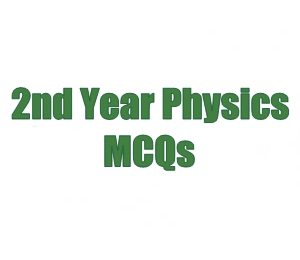If you are looking for 1st Year Physics Chapter 1 MCQs With Answers Measurements then this is the place where you will find them. This chapter is about physical measurements. First of all, there are physical quantities that have three types base quantities, derived quantities, and supplementary quantities. There is a system called System International that was made to express the units of the physical quantities. There is the concept of precision which is the least count of the instrument or of its absolute uncertainty and accuracy that is concerned with the percentage uncertainty in that measurement. The significant figures are the accurately known digits and the first doubtful digits in any measurements. So, now check out the important Physics Chapter 1 Measurements MCQs with Answers below.
1st Year Physics Chapter 1 MCQs
4873



